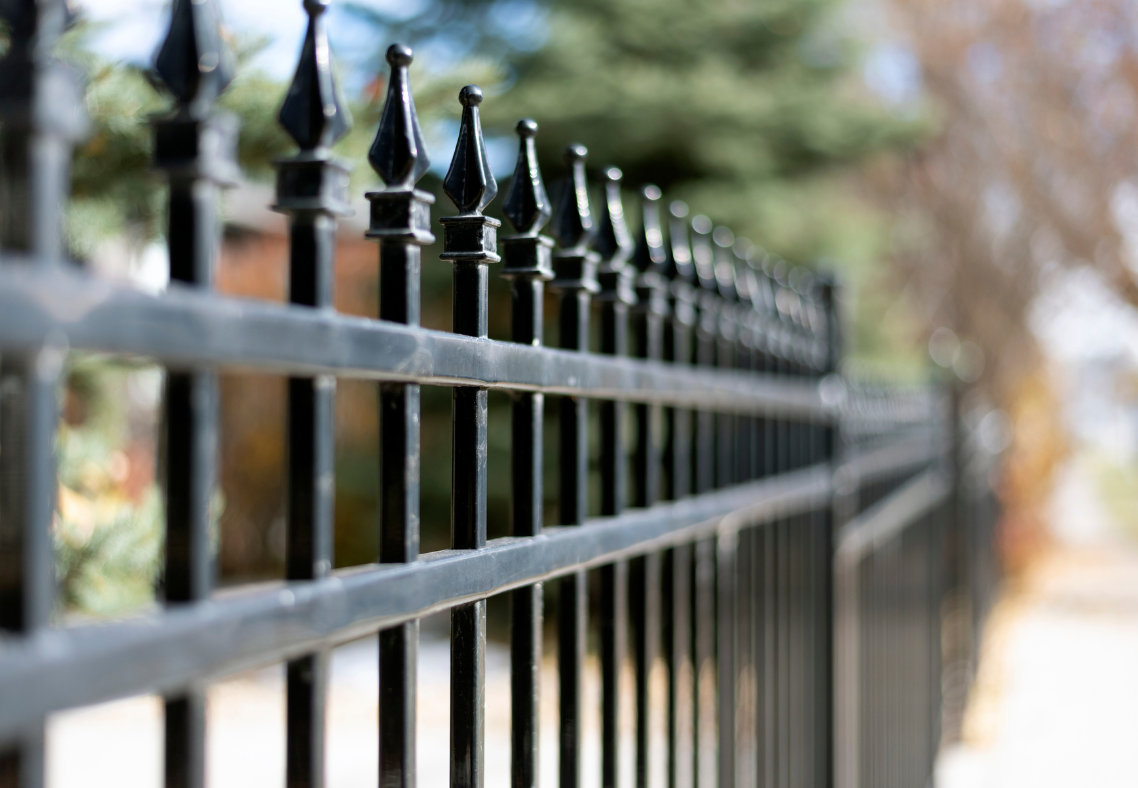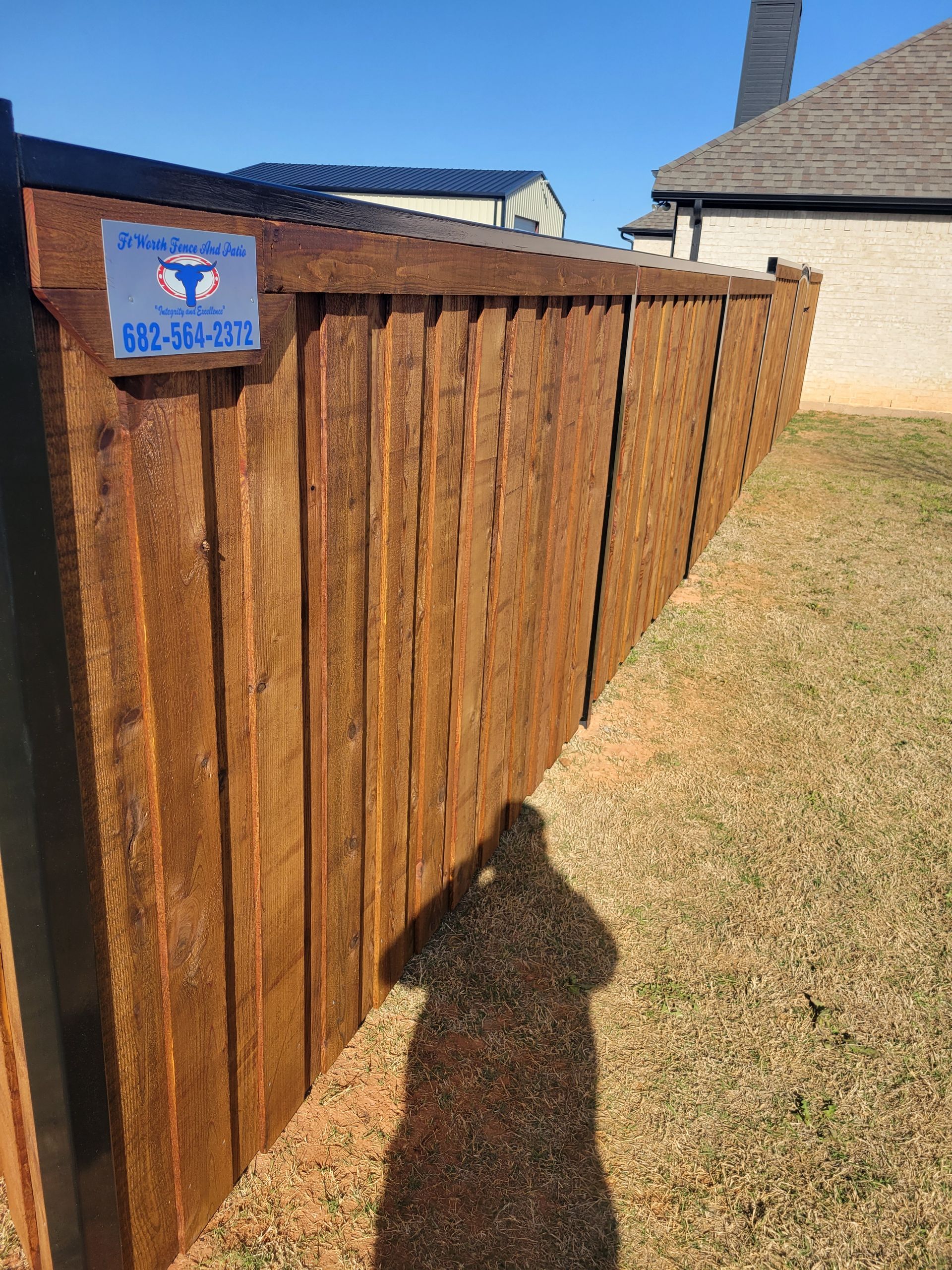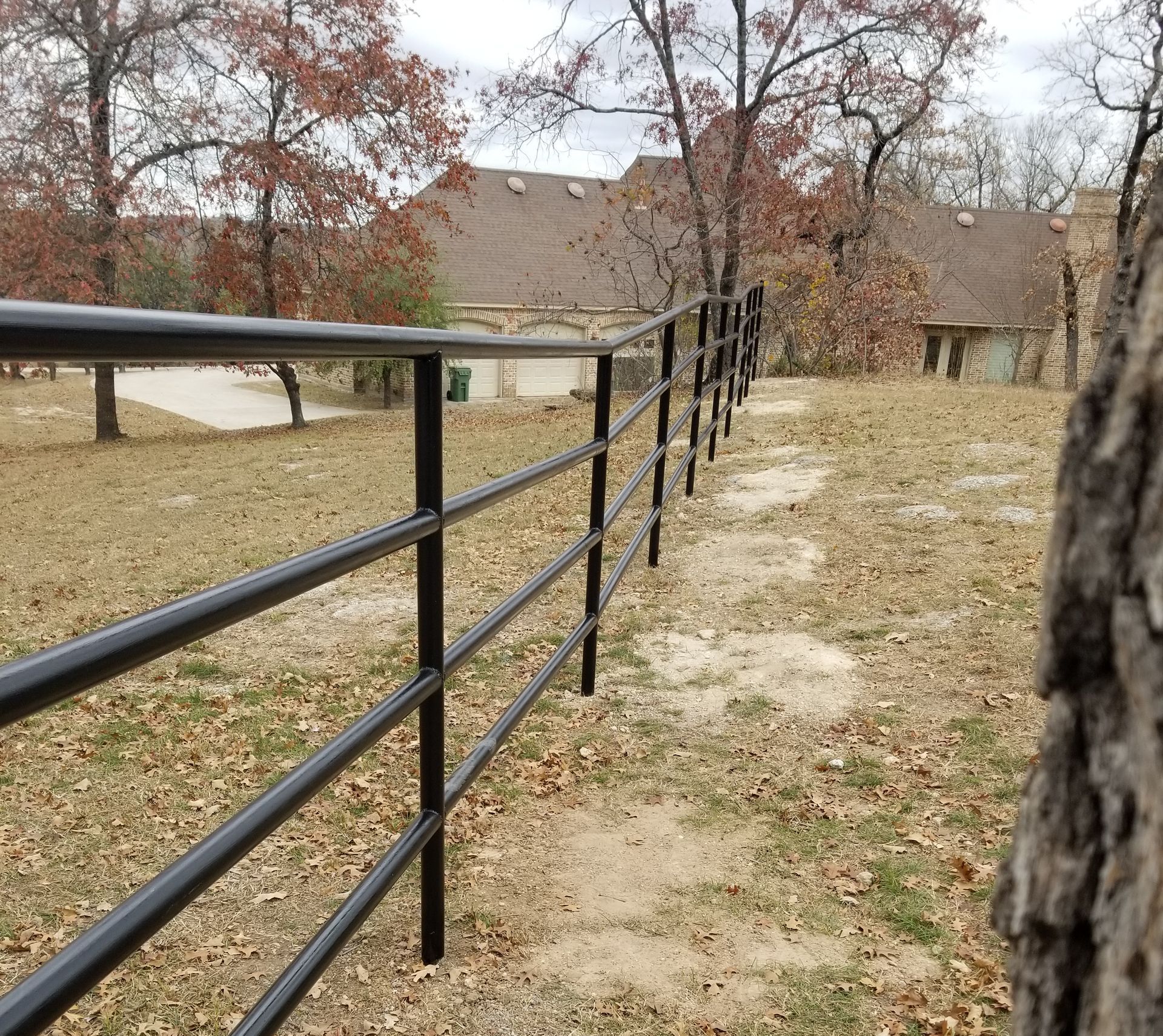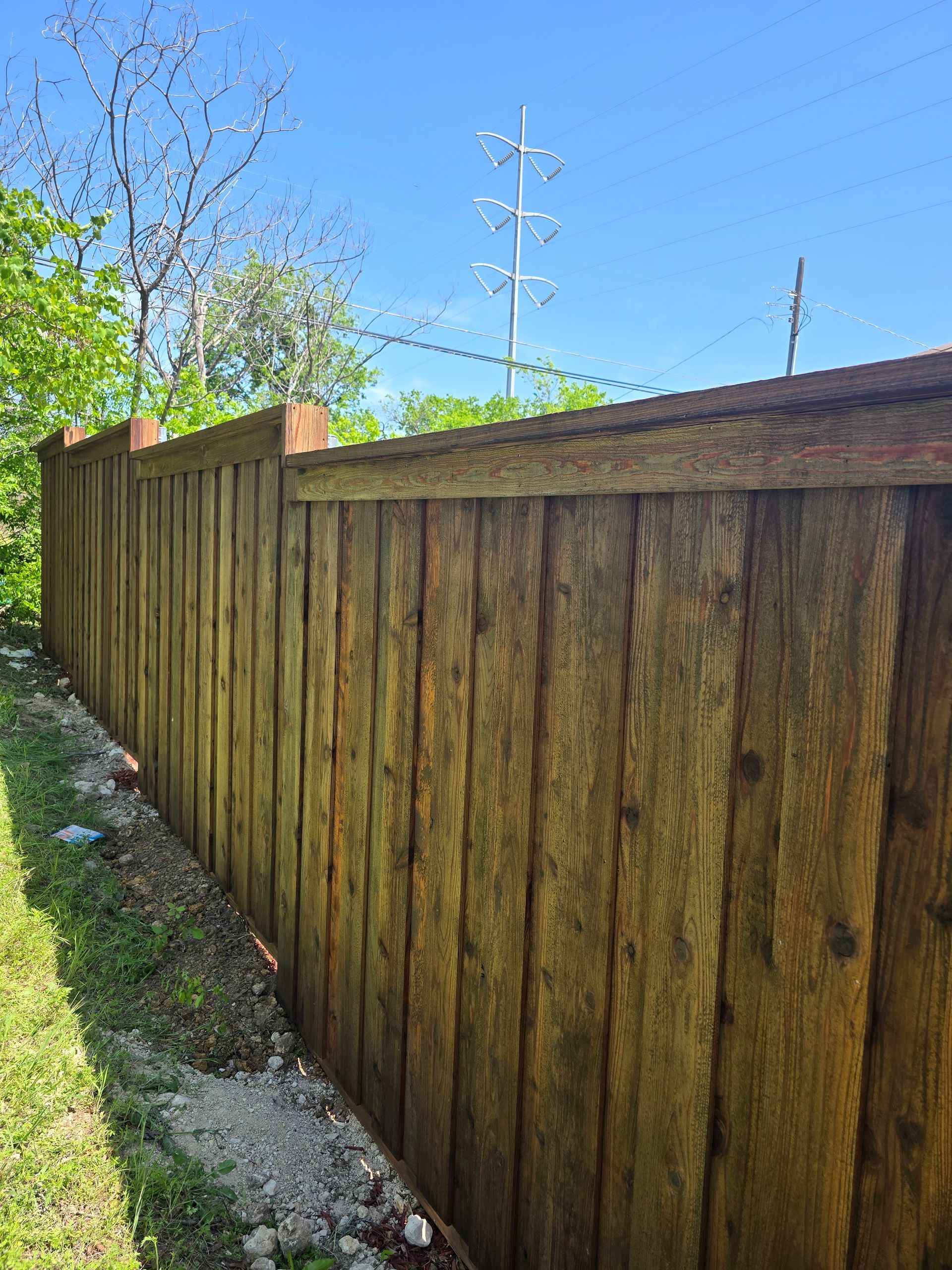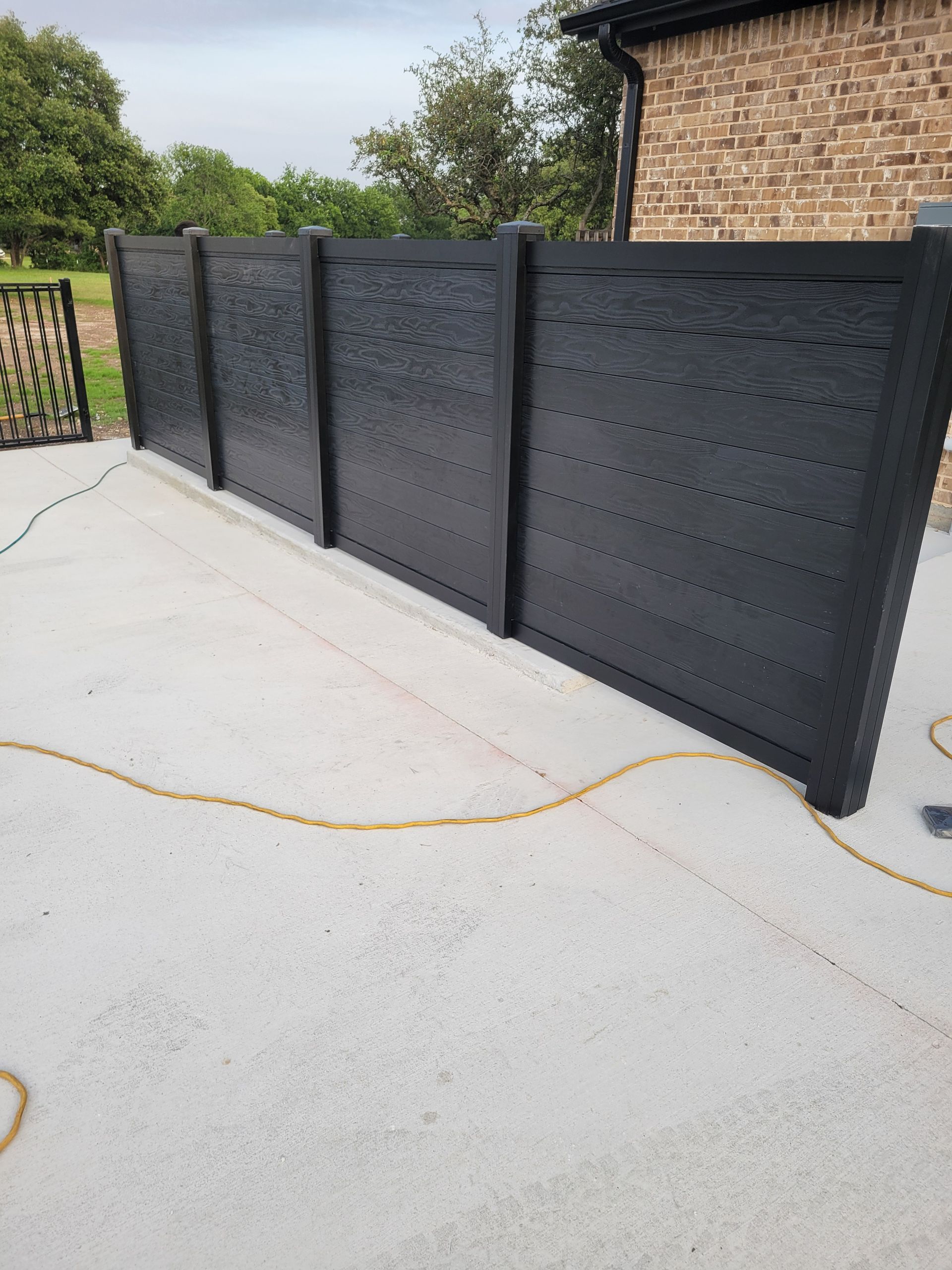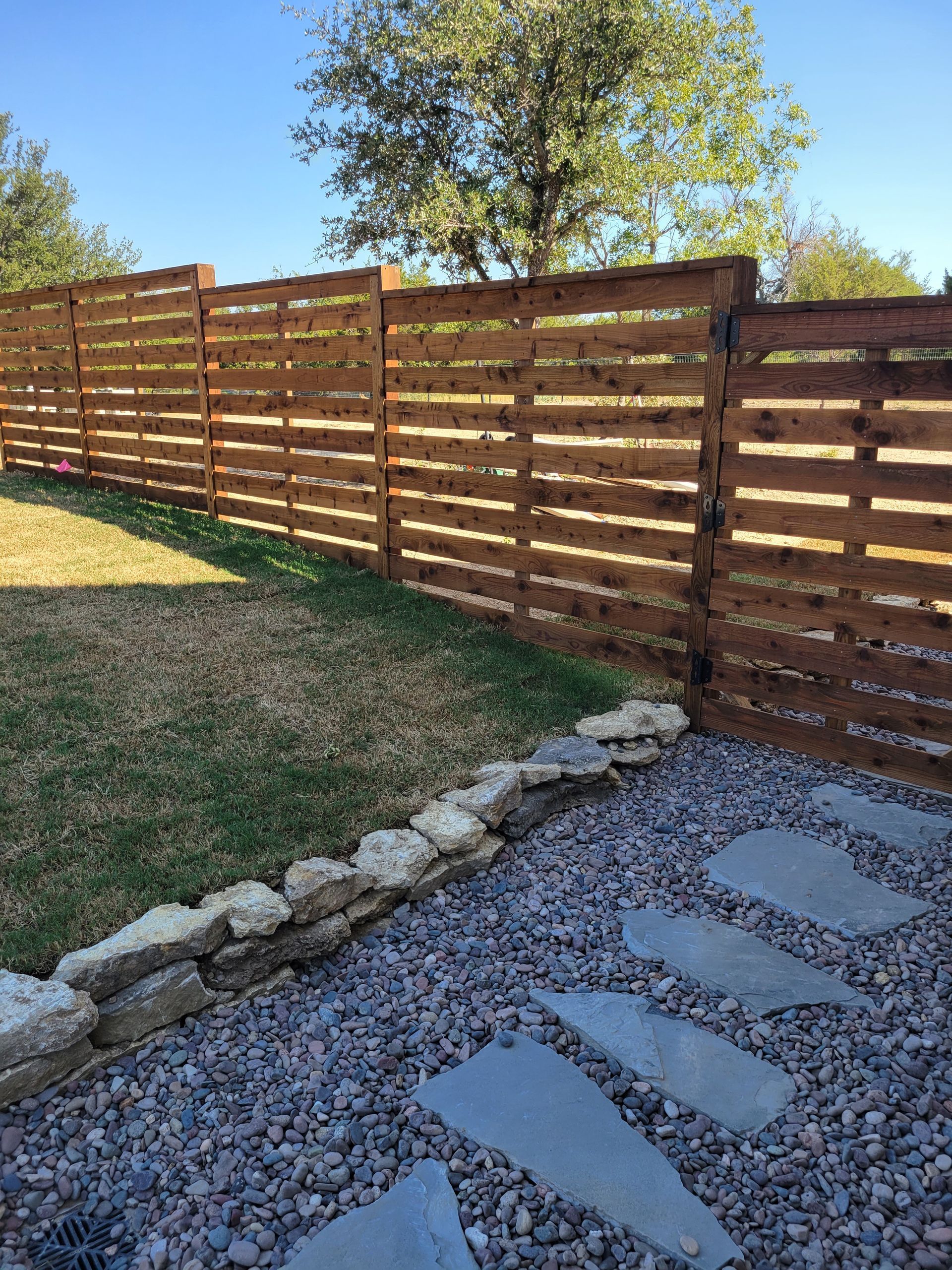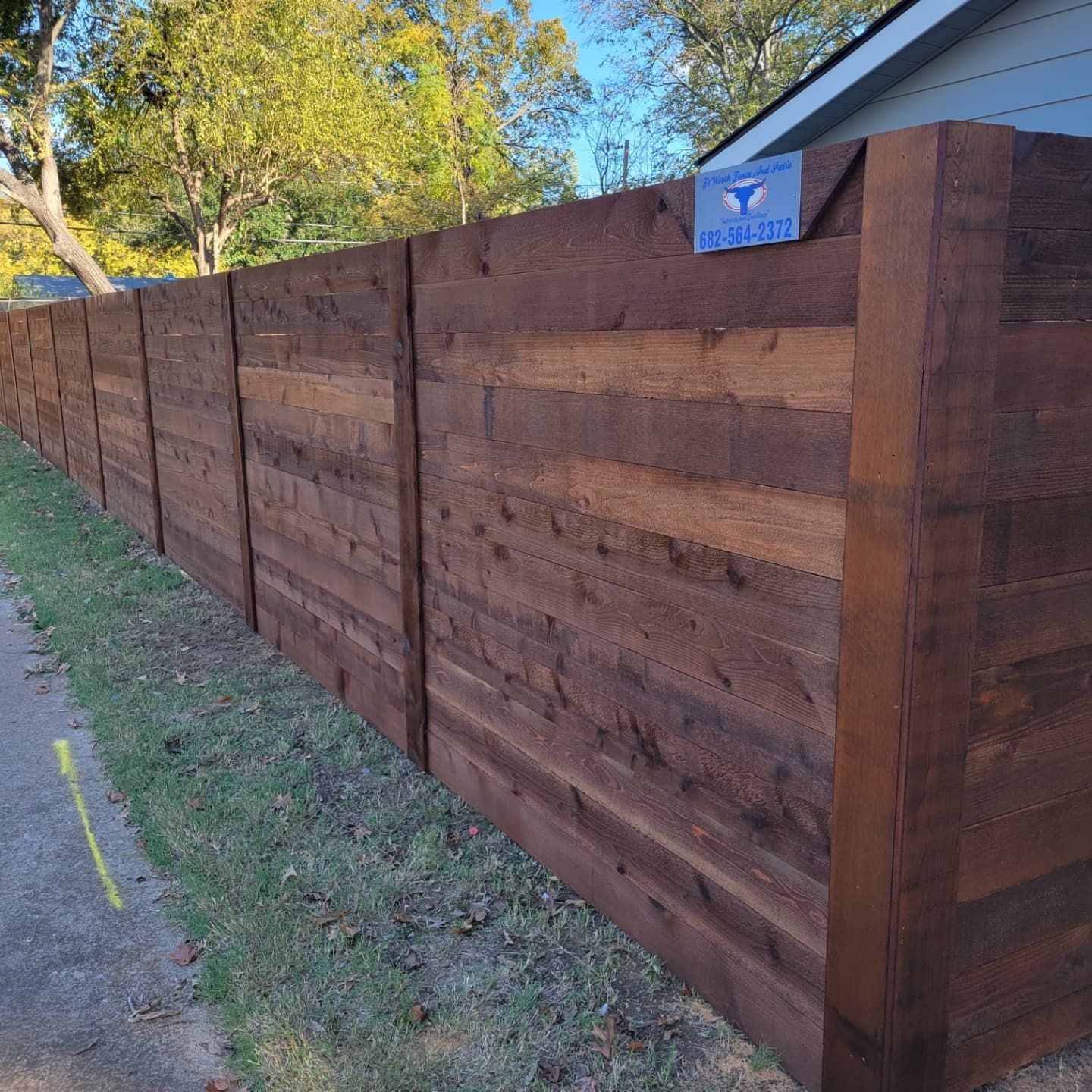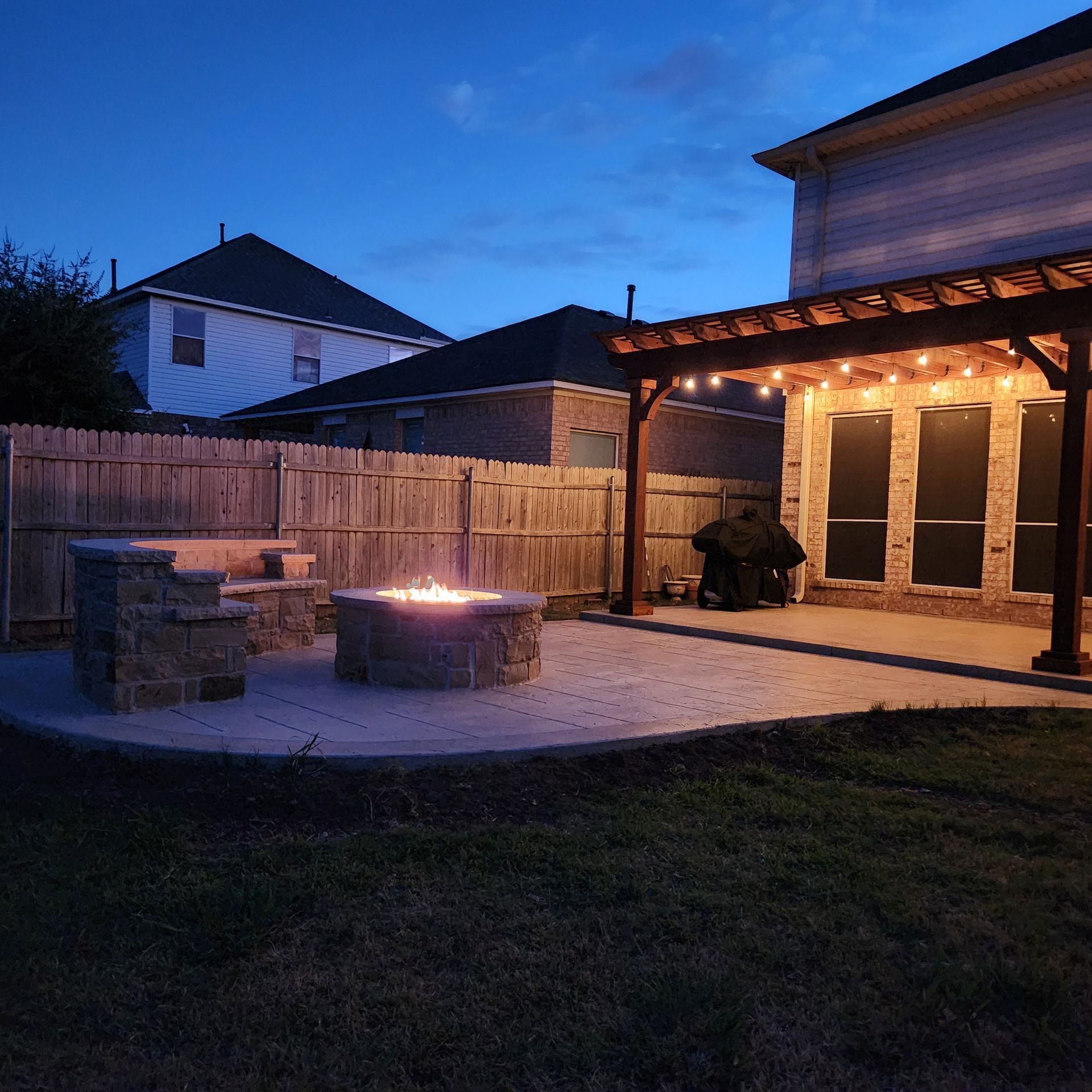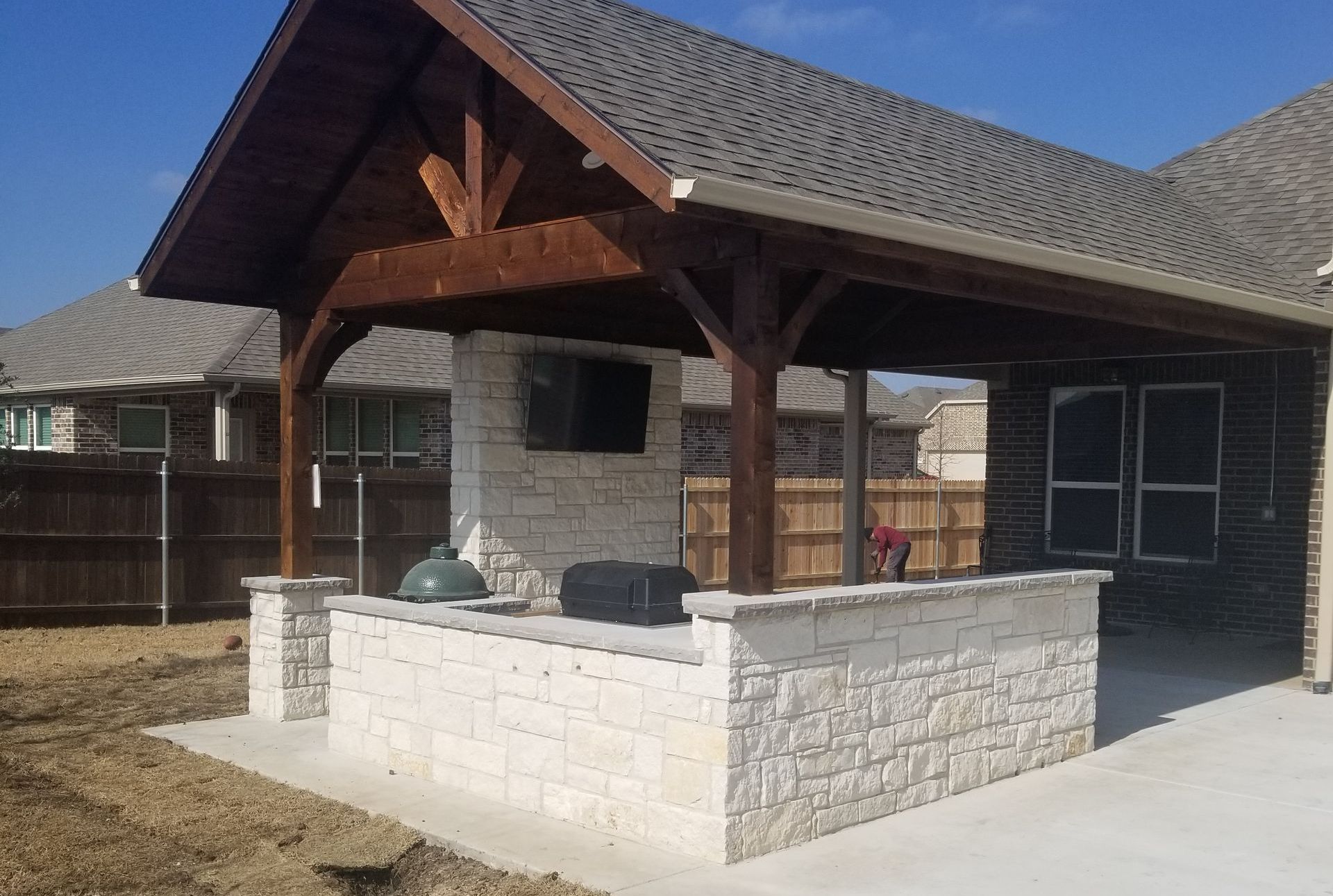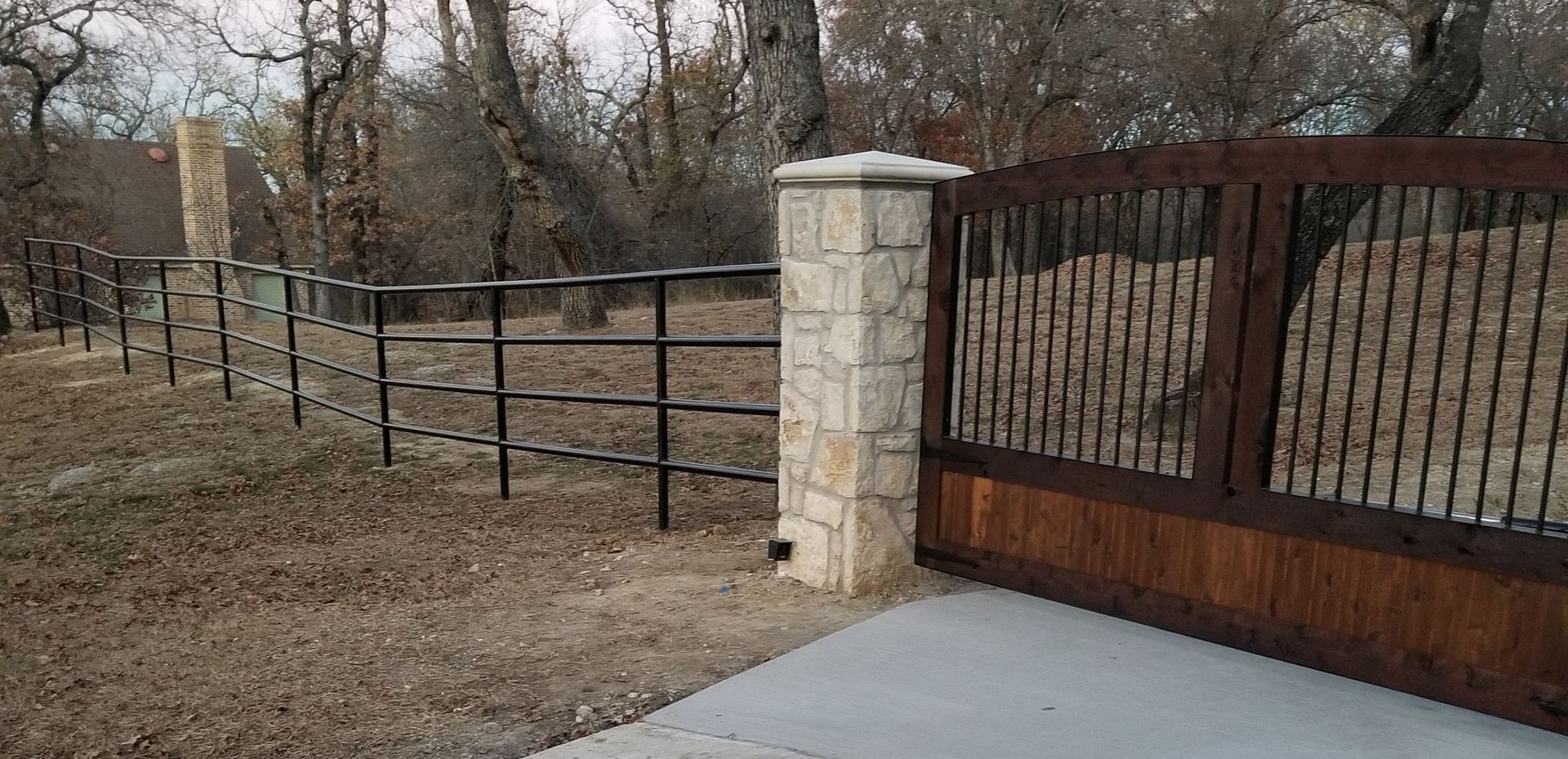Fence and Patio Tips
Patio Cover Maintenance| Covered in 8 easy steps

Patio Cover Maintenance: Simplified in 8 Steps
Intro
Your patio cover is an essential part of your outdoor living space, providing shade and protection from the elements. To ensure your patio cover lasts for years to come, Ft Worth Fence And Patio knows how it's important to properly maintain it. In this guide, we will simplify patio cover maintenance into 8 easy steps, covering everything from regular inspections to cleaning techniques for different materials.
Regular Inspection is Key
Conducting regular inspections of your patio cover is fundamental to its longevity and safety. During these inspections, closely examine each component for any signs of deterioration or damage. Pay special attention to connections and fasteners, ensuring they remain tight and secure, as loose hardware can compromise the structure's stability. Look out for evidence of wear or damage on the cover's surface, such as cracks in wood, rust on metal, or tears in fabric. Additionally, assess the overall stability of the cover, watching for any signs of leaning or unevenness that could indicate foundational issues. Identifying and addressing these concerns early on can prevent minor problems from escalating into major repairs, safeguarding your investment and maintaining the aesthetic appeal of your outdoor space.
Cleaning Techniques for Every Material
The approach to cleaning your patio cover varies significantly based on the construction material. For wooden structures, a soft brush and a solution of mild detergent in water will suffice to remove dirt without damaging the surface. It's crucial not to use harsh chemicals that could strip the wood of its natural oils. Metal patio covers benefit from a gentle cleansing mix of water and a small amount of mild detergent or vinegar, which aids in removing any rust spots or stains without causing corrosion. For any persistent rust issues, specific rust-removing products can be applied after cleaning. Fabric covers require a delicate touch; a soft brush or cloth soaked in a solution of mild detergent and water can lift stains and dirt. It’s important to thoroughly rinse fabric covers to remove any soap residue, as this can attract more dirt over time. Each material demands a tailored approach to ensure the cover is not only clean but also preserved in its best condition, maintaining the aesthetic and structural integrity of your patio space.
Protecting Wood Covers from the Elements
Wooden patio covers, cherished for their natural beauty and warmth, are particularly vulnerable to the whims of nature. To shield them from the harsh effects of moisture, sunlight, and pests, a proactive approach is essential. Begin by selecting a high-quality sealant or wood stain specifically designed for outdoor use. This critical step not only enhances the wood's appearance but also forms a protective barrier against water infiltration, which can lead to rot and mold growth. Application should be done in dry conditions, following the manufacturer's instructions for the best coverage and protection. Additionally, periodic reapplication is necessary, typically every two to three years, depending on the product and the severity of your climate.
Moreover, environmental threats such as overhanging branches can pose a risk to your wood patio cover. Regularly trimming back trees and shrubs will minimize the risk of physical damage and reduce the accumulation of damp leaves and debris, which can harbor moisture and encourage decay. Implementing these measures will not only extend the lifespan of your wood patio cover but also maintain its structural integrity and aesthetic appeal, ensuring it remains a focal point of your outdoor space for years to come.
Rust Prevention and Treatment for Metal Covers
To safeguard metal patio covers from rust, an ongoing strategy is essential. Initiating this process involves thoroughly cleaning the metal surface to remove any debris, dust, or existing rust using a wire brush or sandpaper. This prepares the surface for the next crucial step: the application of a rust-resistant primer. Primers specifically designed for metal outdoor furniture and structures can provide a solid foundation that enhances the adherence and efficacy of the subsequent rust-resistant paint or coating. Choose a product that offers UV protection to combat the additional threat of sun damage, which can accelerate the deterioration of metal surfaces.
Following the primer, apply a high-quality rust-resistant paint. Opting for paint specially formulated for outdoor metal can dramatically extend the life of your patio cover by creating a durable barrier against moisture, one of rust's primary catalysts. For ongoing maintenance, inspect the cover regularly, especially after harsh weather, for any chips in the paint or new signs of rust formation. Early detection allows for spot treatment with a rust inhibitor and touch-up with rust-resistant paint, preventing the spread of corrosion. Employing these proactive measures will keep your metal patio cover looking new and structurally sound, ensuring it remains an inviting part of your outdoor sanctuary.
Keeping Fabric Covers Bright and Strong
To maintain the vibrancy and durability of fabric patio covers, a consistent care routine is essential. Start by gently cleaning the fabric with a soft brush or cloth, using a solution of mild detergent mixed with water to lift any dirt or stains. It's crucial to rinse the cover thoroughly with clean water after washing to eliminate any soap residue, which can attract more grime over time. After cleaning, allowing the fabric to dry completely in the open air prevents mold and mildew growth, common issues that can weaken and discolor the material.
Applying a fabric protectant spray is a key step in preserving the cover's condition against the elements. These sprays create a protective barrier that repels water, resists staining, and provides UV protection, helping to prevent fading caused by sun exposure. It’s advisable to apply the protectant spray after the fabric has been cleaned and dried, and to reapply according to the manufacturer's recommendations, typically once at the beginning of the outdoor season.
This routine care helps ensure that fabric patio covers remain an attractive and functional part of your outdoor space, effectively resisting the damage that sun, rain, and general outdoor use can cause over time.
Structural Integrity Checks
To ensure the long-term stability and safety of your patio cover, it's crucial to conduct thorough structural integrity checks. This process involves a detailed examination of the posts, beams, and all connecting joints. While inspecting, be on the lookout for any signs of wear or damage, such as visible cracks, warping, or sagging components, which could indicate a weakening of the structure. Additionally, assess the tightness of all bolts and fasteners, as loose connections can lead to instability. It's also important to check for any signs of rot in wood covers or corrosion in metal covers, as these conditions can significantly compromise the structural integrity. If any issues are detected during your inspection, prompt action is required to make the necessary repairs or reinforcements. Addressing these problems early can prevent more serious damage, ensuring your patio cover remains a secure and inviting extension of your living space.
Seasonal Adjustments and Care
Adapting your patio cover care with the changing seasons is crucial for its longevity and effectiveness. During winter months, it's essential to promptly remove snow and ice accumulations to avert potential damage from the weight and moisture. Use a soft broom or brush to gently clear the cover, avoiding any harsh tools that might scratch or damage the surface. As spring approaches, inspect for any winter damage and address repairs promptly to prepare for increased outdoor use. In summer, focus on ensuring the cover provides adequate shade while facilitating air circulation to maintain a comfortable outdoor environment. Installing fans or misters can also enhance comfort during peak heat times. Come fall, clearing leaves and debris that have accumulated on and around the cover is key to preventing moisture retention and mold growth. Additionally, this is an ideal time to conduct a thorough inspection and cleaning, preparing your patio cover for the harsher winter months ahead. By making these seasonal adjustments, you actively work to protect and preserve your patio cover, ensuring it serves as a reliable and enjoyable feature of your outdoor space throughout the year.
When to Replace Your Patio Cover
Deciding to replace your patio cover is a significant step that typically comes after realizing repair and maintenance efforts are no longer effective or cost-efficient. There are several indicators that signal it's time for a replacement. Extensive and irreparable damage that compromises the safety or functionality of the structure, such as deep cracks in wood, severe rusting in metal components, or irreparable tears in fabric, are clear signs. Additionally, a patio cover that no longer aligns with the evolving style of your outdoor space or fails to meet your current needs demands an upgrade. Changes in lifestyle, increased usage requirements, or a desire for more modern features might prompt the decision for a new installation. Also, consider the potential for enhanced durability, reduced maintenance, or improved aesthetic appeal with newer materials and designs available in the market today. When faced with these circumstances, exploring replacement options allows you to enhance your outdoor living experience with a patio cover that better suits your preferences and lifestyle.
Contact us today to speak to one of our professionals'
We have the expertise you are looking for. Trust in us you know your investment is worth it.
Free consultations 682-564-2372 We're eager to guide you through every step of maintaining your patio cover. Let us help ensure your outdoor space continues to provide comfort and beauty for years to come.

